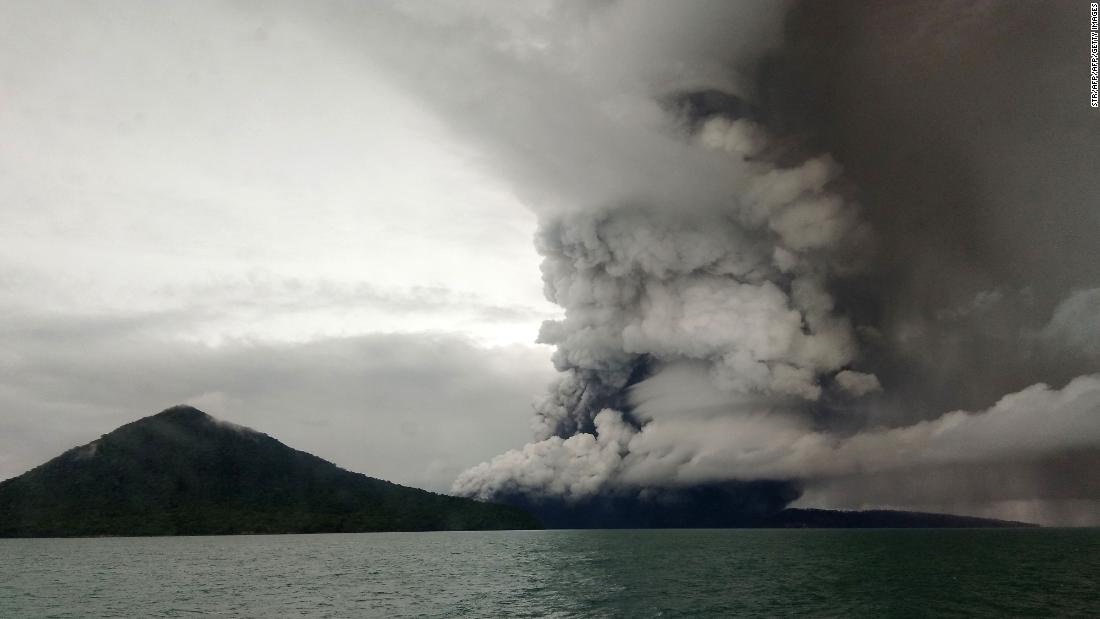
On Thursday, Indonesia's National Board for Disaster Management raised the warning level for Anak Krakatau to 3, the second-highest rank. It earlier appeared to be calming down following Saturday's eruption, which caused a 3-meter (10 foot) high tsunami to sweep through the Sunda Strait, killing more than 430 people and displacing tens of thousands.
Aulia Ariani, a spokeswoman for the Indonesian Red Cross, told CNN that thousands of people had been removed from islands in the Sunda Strait between Java and Sumatra over fears of further tsunamis.
Saturday's tsunami was triggered by a volcanic eruption that caused a 64-hectare (158-acre) chunk of Anak Krakatau to slide into the ocean.
The eruption came at high tide during a full moon, with the Sunda Strait also experiencing a spell of high rainfall, government and rescue agencies said.
Officials said Wednesday that sensors had been placed near Anak Krakatau to better detect activity within the volcano, in hopes of providing a warning of future eruptions.
Indonesian authorities have been roundly criticized for the state of the country's tsunami detection and warning system, which has been largely out of action since at least 2012.
Survivor Bapu Suwarna, 49, told CNN he initially thought the sound of the tsunami was noise from a nearby music concert.
"The sound grew and I even heard crashing sounds," he said. "Seconds later I saw people running from the tsunami wave shouting 'Tsunami! Waves! Waves!'"
"It took only seconds, not minutes, after hearing the thunderous sounds and then the waves hit us. From the bottom of my heart, I sincerely request that the government set up an early warning system so people can anticipate an incoming tsunami. I didn't have much time, after the loud sounds were heard."
On Monday, Indonesian President Joko Widodo ordered the country's Meteorology, Climatology and Geological Agency to purchase tsunami detectors "that can provide early warnings to community."
No comments:
Post a Comment